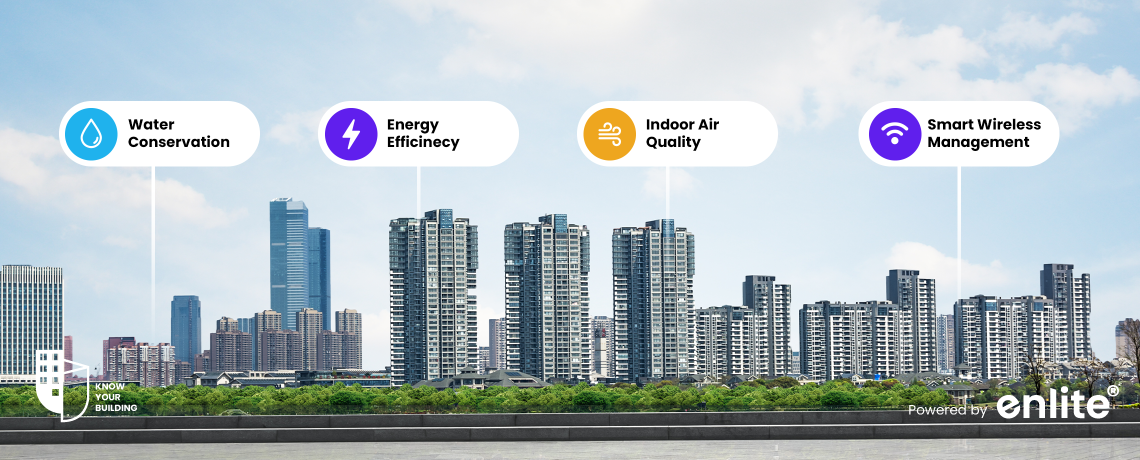Introduction
European nations are experiencing a sharp increase in energy prices as a result of the EU’s sanctions against Russia, the largest energy exporter to Europe, and its retaliatory actions. These sanctions have led to a decrease in the supply of energy and a rise in demand for air conditioning during the summer and heating during the winter. In order to recover from the European energy crisis in the short term, some nations have made the challenging decision to reopen coal-fired power facilities, which has sped up the transition to green buildings. This blog will address the role that green buildings play in resolving Europe’s energy issue.
Energy Crisis in Europe – A Brief Look
Concern over Europe’s energy status has been for a few years now. It has tried everything to reduce its dependence on fossil fuels, especially those supplied by Russia, but has been unable to do so considerably. One of the key reasons for this is that investments in alternative energy sources and renewable energy sources have not kept up with rising energy consumption. Furthermore, Russia shut off the inexpensive natural gas that the continent has been relying on for years to fuel companies and provide electricity.
The result has been a desperate search by European governments for new resources and strategies to mitigate the effects as economic growth slows and electricity costs rise. When Russia’s state-owned gas exporter Gazprom announced that the major pipeline carrying gas to Germany would remain closed, blaming an oil leak and asserting that the issues could not be addressed due to sanctions prohibiting numerous business contacts with Russia, the crisis grew more serious.
Impacts of Energy Crisis
Rise in Energy Prices: At the moment, it is likely that Russia’s invasion of Ukraine will result in a significant and protracted decrease in its energy exports, particularly to Europe. In 2021, Russia ranked first in the world for oil and natural gas exports. Because of this winter’s record-high inflation brought on by high energy prices, consumers will have less money to spend as the price of food, fuel, and utilities rises. An economy that is currently struggling could suffer greater damage from a total stoppage. Energy markets are currently in a state of chaos as a result of the disruption, which also poses serious concerns to global energy security and energy poverty.
Transition to Green Buildings and reach Net Zero: According to the research, there would be no need to invest in new oil and gas fields if there was a large increase in investments in clean energy technology such as renewable energy, energy efficiency, and other sustainable energy technologies. Today, there is a bigger need than ever for this renewable energy investment boom. According to numerous sustainable energy research organisations, energy efficiency and renewable energy must be dramatically scaled up to address the current energy crisis and achieve net zero emissions and green building practices.
How Green Buildings Help in Tackling the Energy Crisis?
According to Paula Rey Garcia from the European Commission’s energy division, who spoke at a Brussels event in September, buildings are a crucial sector when it comes to resolving high energy prices and supply security issues. Martin Pejimovsk, energy attaché at the EU representation of the Czech Republic, which is currently in charge of the bloc’s six-month rotating presidency, agreed that the energy crisis and the conflict in Ukraine call for a “ambitious” revision of the EU’s energy performance of buildings directive (EPBD). While not a quick fix for the energy crisis, revising the building laws for the green building revolution must be a component of the EU’s strategic plans to eliminate energy challenges..
As governments strive to shield residents from growing electricity costs, Europe is under increasing pressure to modernise its outdated, inefficient buildings. 40% of the energy consumed in Europe comes from buildings, many of which urgently require improved insulation to reduce the EU’s dependency on imported fossil fuels.
Russia has disproportionate power over the world’s energy supply since it is a significant supplier of fossil fuels. In actuality, up to 45% of the natural gas used in the EU is imported from Russia. Following the invasion, the EU released a new energy strategy called REPowerEU to handle the situation and transition Europe’s energy systems to a future that is more resilient, green, and significantly less dependent on Russian fossil resources.
However, the significance of buildings and infrastructure in dealing with the issue has largely gone unnoticed. WorldGBC is urging the EU to correct this mistake prior to the publishing of the final energy plan in the second half of May by highlighting how speeding up building renovation can significantly lower the EU’s energy consumption.
Case Study of European Buildings Going Green and Net Zero
A shift in perspective about where energy comes from and how it is utilised is necessary to address the present energy crisis in the EU, which is being caused by a pressing need to move away from Russian gas and oil. In the EU, heating accounts for a sizable portion of energy consumption. The REPowerEU strategy seeks to electrify heating over the next few years by enacting a widespread switch to heat pumps. This will put additional demands on city electrical networks, which will also be affected by the electrification of transportation (cars, bikes, light commercial vehicles, etc.). It will be challenging to plan for and manage these conflicting energy demands.
But right under the feet, in every European city, are wastewater networks that transport copious amounts of free low-grade heat. Buildings in the city already require this heat energy, and the infrastructure for collecting and transferring it—the sewer network—is already in place. Sadly, most of the time, this energy is simply disregarded and flushed away daily.
For instance, we will consider how wastewater can help in achieving energy efficiency. A wastewater heat recycling system will often cost more to build than air source heat pumps. This is because maintaining the sewer network frequently necessitates expensive civil work.
However, because wastewater is more efficient than air source heat pumps in operating at favourable temperatures (often around twice as efficient), capturing and reusing wastewater heat makes it possible to electrify larger structures with less electricity (so helping manage the growing demands on the electrical infrastructure).
Other advantages of wastewater heat recycling heat pumps exist as well, and they are particularly pertinent in urban settings.
These consist of:
Smaller equipment size: Air source heat exchangers occasionally cannot be installed in inner-city buildings due to a lack of available space. Equipment for recycling wastewater heat is often smaller in size and situated in the basement or close to the structure.
Noise generation: Air source heat pumps need fans to circulate air through the external heat exchanger, which produces noise. These fans naturally make some noise, which might be an issue in cities where there may be people sleeping, working, or learning. Systems for recycling waste heat lack exterior fans. Noise is contained because all of the equipment is mounted inside the room or basement.
How is WorldGBC collaborating with its network to take action faster against the European Energy Crisis?
Governments and businesses are currently frantically searching for new energy sources, and the EU has just agreed to buy liquefied natural gas from the US. However, buildings provide a remarkably cost-effective approach to increasing energy security throughout Europe.
As the buildings become more efficient, people become less dependent on outside resources and have access to additional advantages like enhanced indoor air quality and more pleasant dwellings, a topic that has received significant attention since COVID-19. And, of course, reducing energy costs is crucial because homeowners all around Europe are struggling with the crisis’s skyrocketing energy rates.
Structures use 40% of the energy consumed in Europe, and it’s been calculated that 97% of those buildings could use some energy efficiency improvements. Green Building upgrading is one of the most significant and easily implemented ways to meet this catastrophe because the knowledge and technology to do so are currently widely available. Some of Europe’s other urgent social issues can also be addressed with a significant refurbishment effort. For instance, it aids in the fight against energy poverty, which affects an estimated 36 million individuals in the EU who cannot afford to effectively heat their homes.
Like the current crisis in Ukraine, climate change in Europe is a challenging crisis. Although WorldGBC has been promoting sustainable buildings for 20 years, the current crisis has made it clear that ambition and action need to be increased.
To address the greenhouse gas emissions of buildings and lower their energy use, GBC is collaborating with our global network of more than 70 Green Building Councils.
Eight Green Building Councils (GBCs) in the Europe network, for instance, recently finished collaborating with more than 30 towns in Europe to design and test a tool that provides governments with a template to quantify the impact of their restoration projects. The 13 indicators in the final build upon Framework, which cover environmental, social, and economic indicators, enable officials to show how restoration is reducing energy use while also addressing energy poverty and generating jobs.
In this approach, the Framework can be an essential instrument in addressing the problem of inadequate retrofit data, which is essential for achieving the EU’s anticipated renovation wave of 35 million houses by 2030.
What steps is the EU taking to address the current energy crisis?
Based on the core principles listed below, the EU are adopting a comprehensive and integrated policy incorporating a wide range of industries:
- The European Union will now adopt a comprehensive and integrated strategy based on the following fundamental tenets: “Energy efficiency first” as a horizontal guiding principle of European climate and energy governance and beyond, as outlined in the European Green Deal and the EU strategy on Energy System Integration, to ensure that European nations only produce the energy that is truly necessary.
- The EU is now ensuring widespread availability of energy-efficient and sustainable buildings, particularly for homes with moderate to low incomes and vulnerable populations.
- Incorporation of decarbonization strategies and inclusion of renewable energy sources. Building renovations could encourage wider use of waste heat and hasten the incorporation of renewable energy sources, particularly those from local sources. It should integrate local and regional energy networks, assisting in the decarbonization of transportation as well as heating and cooling.
- Resource efficiency, circularity, and transforming a portion of the construction industry into a carbon sink are all necessary to reduce the environmental impact of buildings. Examples of such initiatives include the promotion of green infrastructure and the use of organic building materials that can store carbon, such as wood, from sustainable sources.
- Tackling both the green and digital revolutions’ dual problems at once. At the home, neighbourhood, or municipal level, smart buildings can facilitate the effective production and utilisation of renewable energy. They will make it possible for extremely efficient and emission-free buildings when combined with intelligent energy distribution systems.
Some EU Member nations have already made the decision to address this by enacting minimum performance standards by a certain compliance date or at particular points during a building’s life cycle. Such regulations function best in conjunction with trustworthy energy performance certificates and funding because they act as an anchor for investors’ and businesses’ expectations. Such a regulatory effort would have the benefits of creating clear guidelines for decision-making in multi-owner structures, reflecting energy performance in a building’s worth, and addressing the general lack of knowledge about the advantages of refurbishment.














